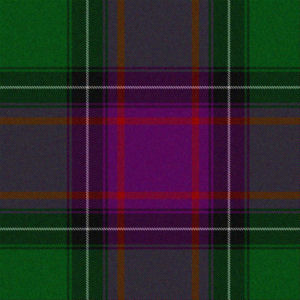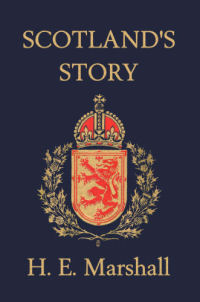
HOME
INTRO
SYMBOLS
ALMANAC
ECONOMY
GEOGRAPHY
STATE MAPS
PEOPLE
FORUM
NEWS
COOL SCHOOLS
STATE QUIZ
STATE LINKS
BOOK STORE
MARKETPLACE
NETSTATE.STORE
NETSTATE.MALL
GUESTBOOK
CONTACT US

New Hampshire State Tartan: STA No. 5624
ScotWeb - Weavers to the World
New Hampshire Law
The following information was excerpted from the New Hampshire Statutes, Title 1, Chapter 3, Section 3:21.
TITLE I THE STATE AND ITS GOVERNMENT
CHAPTER 3 STATE EMBLEMS, FLAG, ETC.
Section 3:21
3:21 State Tartan. -
I. There shall be an official state tartan of New Hampshire. The sett for the New Hampshire tartan shall be as follows: green 56; black 2; green 2; black 12; white 2; black 12; purple 2; black 2; purple 8; red 6; and purple 28.
II. The colors listed in paragraph I represent the following: purple represents the purple finch and the purple lilac, the state bird and the state flower; green represents the green of the forests; black represents the granite mountains; white represents the snow; and red represents all state heroes.
Source. 1995, 72:3, eff. July 8, 1995.
Sources...
New Hampshire Statutes. New Hampshire General Court. 2009. 19 April 2009.
Shearer, Benjamin F. and Barbara S. State Names, Seals, Flags and Symbols: A Historical Guide Third Edition, Revised and Expanded. Westport, Conn: Greenwood Press, 3 Sub edition, 2001.
Additional Information
State Tartan: Information on the state tartan - New Hampshire Almanac, compiled by the New Hampshire State Library.
History of the New Hampshire Tartan: The St. Andrew's Society of New Hampshire.
A History of Scottish Kilts: From the website of Authentic Ireland Travel.
The History of Scottish Tartans & Clans Tartans: Scottish History Online.
A Short History of Tartan: Peter MacDonald Tartan Design & Consultancy
Tartans of Scotland: The definitive guide to tartans on the web.
House of Tartan: Tartan fabrics and products by mail order.
More symbols & emblems: Complete list of official New Hampshire state symbols.

Scotland's Story
by H. E. Marshall
Scotland's Story, by H. E. Marshall. 552 pages. Yesterday's Classics (December 19, 2005) Reading level: Ages 9-12. A child's history of Scotland, from legendary days through the time when the kingdoms of Scotland and England were joined together. Relates in vigorous prose the thrilling exploits of the heroes and heroines who defended Scotland from its English invaders. Includes the stories of Macbeth, William Wallace and Robert the Bruce, Mary Queen of Scots, the poet king and the beautiful lady of the garden, the "Glen of Weeping" and many others. First published a century ago, from the author of the highly-acclaimed "Our Island Story."
Scotland: The Story of a Nation, by Magnus Magnusson. 752 pages. Grove Press (January 17, 2003) Drawing on a great deal of modern scholarship that has redefined the nation's story, Magnusson vividly re-creates the long and fascinating story of Scotland, offering the most up-to-date and comprehensive history available today. Magnusson, who received an honorary knighthood for his contributions to the preservation of Scotland's heritage, casts the nation's historical trajectory as a long struggle toward nationhood. He explains the roots of the original Scots and examines the extent to which Scotland was shaped by the Romans, the Picts, the Vikings, and the English. He casts a sober eye on the many historical myths that have developed over the years, assessing their credibility while giving full appreciation of their importance to the people of Scotland.

Tartan: Romancing the Plaid
by Jeffrey Banks, Doria de La Chapelle
Tartan: Romancing the Plaid, by Jeffrey Banks, Doria de La Chapelle. 288 pages. Rizzoli; illustrated edition edition (October 23, 2007) Fashion world insiders Jeffrey Banks and Doria de La Chapelle have written the definitive book on tartan, bringing together a dizzying array of images to tell the story of tartan's humble beginnings to its current status as the ultimate emblem of great taste and high fashion. In addition to chronicling tartan enthusiasts from every age - including the incomparably fashionable Duke of Windsor whose closet was jam-packed with tartan kilts - Tartan profiles the designers who've made tartan an integral part of their work, from punk-inspired provocateurs Vivienne Westwood, Jean-Paul Gaultier, and Alexander McQueen to the more refined fashions of titan Ralph Lauren and Burberry.
Learning to Weave, by Deborah Chandler. 232 pages. Interweave Press; Revised edition (March 1, 1995) Learning to Weave has become the standard text book for both teachers and self-taught weavers. All you need to know is here including warping, reading and designing drafts, and the basics of weave structures. Warping back to front is included as well as updated resource lists.
Tartan: The Highland Textile, by James D. Scarlett. 204 pages. Shepheard-Walwyn (January 1, 1990) This is one of the tartan classics by Jamie Scarlett, éminence gris of the tartan scene. First published in 1985 and revised and reprinted in 1995 due to popular demand. A slim, stylish book providing the weaver and student with invaluable information on tartan and its weaving.
The Tartan Weaver's Guide, by James D. Scarlett. 68 pages. Shepheard-Walwyn Publishers (1995) Combines practical experience with a grasp of Highland social history in this book, which although aimed specifically at the amateur tartan-weaver, contains much of which will be of interest to students of either subject.
 Custom Search
Custom Search



